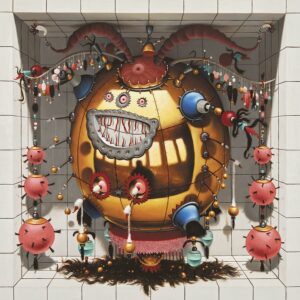
54 albums from Decca’s golden years between 1954-1980, sensitively remastered onto CD and packaged with mock original jackets in a thick cardboard box, all for less than £100. How can it get any better than this?
This is the third of Decca’s big boxes, plundering its back catalogue; alongside The Analogue Years, there’s a broader 50 disc Decca Sound box from 2011 (which is now getting slightly hard to find) and another 50-disc box set published this year to celebrate a half century of Vladimir Ashkenazy playing for the label. The Analogue Years is a testament to a bygone age – a time when audio engineering was undergoing massive change, was run by electronics engineers and musicians, and classical music was a valued subject in its own right.
The choice of recordings is a bit “curate’s egg”, but I guess any 54-strong collection of discs will never be able to provide something for everyone. It covers everything from early experimental stereo recordings (discs 53 and 54 – a Rimsky-Korsakov, Antar, Glazunov, Stenka Razin set – are the same in ‘ffrr’ mono and ‘ffss’ stereo test from the early 1950s), and there are a couple of overlaps between the other two boxes, but this is a good overall set, not only showing just how good Decca were at recording, but also highlights that you could produce several 50+ disc sets from studios like Decca during this period, and still be far from scraping the barrel.
The vast majority of works are from the late Romantic, early Modern and Modern periods; there’s nothing wrong with Mozart’s Wind Serenades and Beethoven’s Ninth Symphony at all – and they are both outstanding recordings – but the vast majority of albums in the set are recordings of composers from 1840 and beyond.
What you do get in these sets is care. They are made at a time when cutting an album was placed in the hands of white-coated engineers who were prepared to spend time creating excellent recordings… and it shows. Striking examples of music and recording colliding perfectly include the wonderful Solti-Chicago SO/Bruckner 6, Münchinger-Vienna Phil/Schubert Rosamunde, the almost legendary 1964 Britten/Rostropovich meeting, the Curzon-Szell/Brahms Piano Concerto No 1 and more. These are a part of our British recorded musical heritage, and while no box set is perfect, this has a very good hit rate.
It’s worth remembering that many of these recordings were made for LP and are as a result short by CD standards. Decca makes up for the shortfall on many discs, with ‘fillers’ (Decca’s own words), and many of these are excellent in their own right. Not all fit well together; they are not intended as standalone recordings, but they are more than just space fillers.
Finally, if you want new LP versions of the same, there is a very limited edition six-180g LP set of some of the highlights of the box. Given the originals are now hard to find without heavy wear, and the six-LP set of the original box now discontinued and command a small fortune, this could be a worthwhile investment.
By Nicholas Ripley
More articles from this authorRead Next From Music
See all
Depeche Mode: Memento Mori
- Apr 22, 2024

Music Interview: Jah Wobble
- Mar 27, 2024

Music Interview: Don Reedman
- Mar 27, 2024

Album Review: Orbital – Optical Delusion
- Mar 20, 2024










